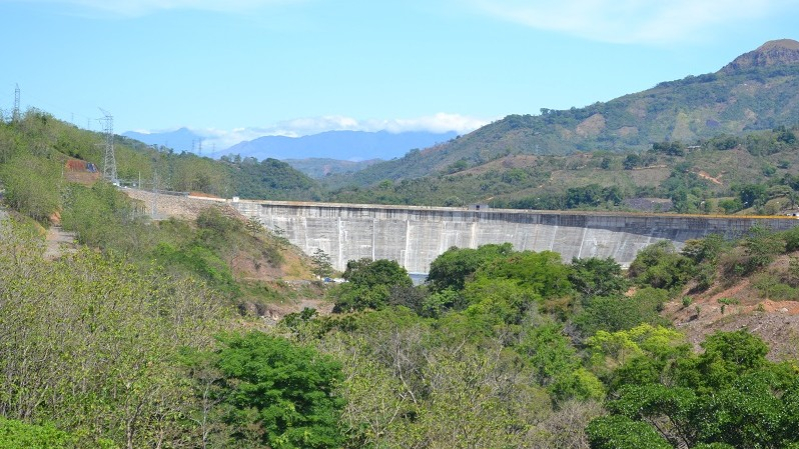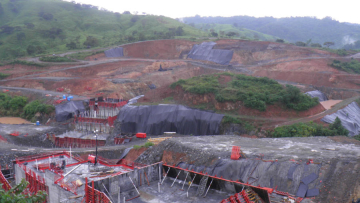Project – On record
This profile is no longer actively maintained, with the information now possibly out of date
Project – On record
This profile is no longer actively maintained, with the information now possibly out of dateWhat must happen
GENISA is in violation of the banks policies and of international human rights standards. The banks should make sure this is not acceptable. They should pressure their client to stop operating the project until proper compensation has been provided and FPIC has been obtained. FMO should learn from this case that the process of engaging local communities is crucial in the projects it finances and that without the free prior and informed consent of Indigenous Peoples affected by a project, this leads to serious conflicts. They should implement a zero tolerance FPIC policy.
| Sectors | Hydroelectric Power Generation |
| Location |
|
| Status |
Planning
Design
Agreement
Construction
Operation
Closure
Decommission
|
| Website | http://www.genisa.com.pa/en/barro-blanco/ |
|
|
This project has been identified as an Equator Project |
The Barro Blanco dam is under construction in the Tabasara river, in the Chiriqui Provence of Panama. The dam will have a capacity of 28.85 megawatts and a reservoir surface of 2.58 square kilometres. It is being built by the Honduran owned special purpose company Genisa and is being financed by FMO, DEG and CABEI. Construction has been completed, except for testing of the facilities. As agreed upon in August 2015, operations would not start until a final agreement had been reached with the local indigenous communities.
On 22 August 2016, this agreement between the government of Panama and the representatives of the indigenous Ngabe-Bugle communities was signed. The agreement states Genisa will be removed as the dam's operator. Instead, the dam will be operated by a group of professionals, of which at least 50% is part of the local indigenous or farmer communities. However, multiple groups do not support the agreement and were not properly informed about the implications.
Social and human rights impacts
The reservoir of the dam will flood 6.7 hectares of the indigenous territory (Annex to the Comarca) of the Ngäbe-Buglé people, Panama's largest indigenous group. The villages of Nuevo Palomar, Quebrada Caña and Kiad, with approximately 538 people, will be directly affected. Six houses, including a school, will be flooded and their inhabitants are being forcefully resettled.
The Ngäbe depend on the river for their physical and spiritual survival. They use the water for drinking and washing as well as for swimming and leisure activities. The river beds supply fertile lands which are used for agriculture, as well as for the collection of medicinal plants. Along the river cementaries and traditional sacred places, including three petroglyphes, will be flooded.
The dam will convert the Tabasará River from a running river to a stagnant lake ecosystem, resulting in significant changes to the Ngäbe’s diet and their landscape. Forced relocation of some indigenous families is expected.
There is a long-standing conflict between the Ngäbe people and the government concerning mining and the construction of dams for hydropower generation in or near their territory. The Changuinola Dam (223 MW) in the neighboring province of Bocas del Toro was completed in 2011 and resulted in numerous Ngäbe villages being flooded, with no compensation provided. Another large dam, Tabarasá 2, is planned further downstream on the Tabarasá River.
In August 2016 the testing continued and the water reached its maximum level (103m above sea level). People living in the communities at the shore of the river were again not informed of this. This means that literally from one day to the other their land and several houses were inundated. This had severe impactse: less food, no houses, more mosquitos, for a while the river was inaccessible so no drinking water, no fishing, no washing etc.
In January and February 2017 the testing was stopped and the water levels came down again. Leaving a destroyed, dirty mud surface: meaning to access to the river, destroyed land and houses.
The Environmental Impact Assessment failed to include the Ngäbe-Buglé Comarca and did not properly consult the Ngäbe communities that will be directly affected by the dam. Let alone ask for their consent. When the Ngäbe protested and requested to be heard by the president, they were instead received with bullets from the police.
As such, the State of Panama has not fulfilled its national and international obligations with respect to (i) free, prior and informed consent of indigenous communities who will be affected by development projects; (ii) protection of indigenous lands, territories, and natural resources; and (iii) protection from state-sponsored violence. Panama’s human rights failure to act include the rights to culture, physical security and integrity, land, health, subsistence, and freedom of movement and residence, as well as access to information, public participation, and justice.
Environmental and climate impacts
The environmental impact study made a very superficial analysis of the impacts on biodiversity. It failed to include the endemic Blue Tabasara rain frog, as well as several other CITES listed species, whose habitat will be flooded by the dam. The dam will also be a barrier to migrating fish and shrimps. The capacity of the plant and the surface of the lake were increased after the EIA was released, and no further studies were done to evaluate the impact of this. This project resorts under CDM, the Clean Development Mechanism, claiming a CO2 reduction of 66,750 ton equivalent. It was approved without attending to the letters of concern of the Ngäbe.
Other impacts
The construction of this dam will cause the flooding of petroglyphs and three ancestral cemeteries.
The project is expected to cost USD 78.3 million. In 2010, GENISA, which already had financing for Barro Blanco approved by a German (DEG) and a Dutch Development bank (FMO), withdrew their application for funding from the European Investment Bank (EIB) after learning that bank officials planned to visit the affected area themselves. Instead, it received funding from the Central American Bank of Economic Integration.
Genisa
PanamaApplicable norms and standards
Video links
2017
2017-03-24 00:00:00 | Barro Blanco dam begins operations while indigenous pleas are refused
The contentious Barro Blanco hydroelectric dam is set to begin operations within the next few weeks, defying both the relentless opposition by affected communities and the rejection last September by local indigenous authorities of a government proposed project completion agreement. According to Roberto Meana, General Administrator of Panama’s National Authority for Public Services (ASEP), the 28-megawatt gravity dam in western Panama could begin operation within days once necessary tests are finalized. The reservoir’s waters have been rising since August of last year, gradually flooding Ngäbe communities and land (Mongabay.com).
2016
2016-05-27 00:00:00 | Panamanian Minister confirms affected communities were not informed about test flooding
On 27th May 2016, Panama's Minister of Internal Affairs Milton Henríquez confirmed that the Ngäbe communities had not been properly informed about the test flooding that started three days earlier. On behalf of the National Government, the Minister apologized to the local communities for any situation that has inflicted confusion.
2016-05-25 00:00:00 | Flooding of reservoir begins, Indigenous territories to be inundated
On 24th May 2016, Barro Blanco's floodgates were closed. As part of a testing procedure the reservoir will be filled up to 103 metres above sea level, resulting in the inundation of more than six hectares of Ngäbe-Buglé territory. The flooding is in conflict with the agreements made by the Round Table in August 2015. Silvia Carrera, director of the Ngäbe Buglé General Congress, declared she has not been informed about the flooding.
2015
2015-08-10 00:00:00 | Government signs agreement with indigenous communities on Barro Blanco
The Panamanian government signed an agreement with the indigenous communities that are affected by the Barro Blanco project. The government committed itself to not flooding the reservoir or to initiate operations of the project until a final agreement has been reached between the conflicting parties.
2015-02-10 00:00:00 | Barro Blanco temporarily suspended over non-compliance with environmental impact assessment
In a landmark decision, Panama's National Environmental Authority (ANAM) temporarily suspended the construction of the Barro Blanco hydroelectric dam yesterday over non-compliance with its Environmental Impact Assessment (EIA). "We urge the banks to halt disbursement of any remaining funds until all problems are solved and the affected indigenous communities agree to the project," commented Kathrin Petz of Urgewald. - Read more.
2014
2014-06-19 00:00:00 | Complaint to FMO
The complaint to FMO's grievance mechanism has been judged as meeting the admissibility criteria and will move on to the next phase.
2014-05-07 00:00:00 | Complaint submitted
Panamanian Indigenous community submits complaint to the FMO’s recently established independent grievance mechanism. For more information read the press release.
2013
2013-07-30 00:00:00 | UN report
In July James Anaya, UN special rapporteur on the rights of indigenous people visited Panama and spoke to the Ngäbe. In his report he concludes that there is a strong opposition against the dam among the Ngäbe, and that they were not properly consulted. He also said that the Barro Blanco dam is symbolic for the way indigenous people are treated in Panama when it comes to mining and hydroelectric projects.
2012
2012-03-15 00:00:00 | Parliament passes mining law
Parliament passed a modified version of the mining law that prohibits mining in the indigenous territory and requires the approval of the Ngäbe-Buglé General Congress for any future hydroelectric projects.
2012-02-28 00:00:00 | Ngabe protest
The Ngäbe blocked the Interamericana highway. Two people died in clashes with the police and many more were injured.
2011
2011-08-25 00:00:00 | Agreement between Genisa and congress of the Kadiri
A compensation and benefits agreement was signed between Genisa and the regional congress of the Kadiri. But this agreement is contested as the whole congress was not present at that meeting. Moreover, consent by the General Congress has never been publicly obtained.
2011-03-31 00:00:00 | M10 movement protests
In 2011 new legislation provided foreign companies new rights for the exploitation and acquisition of minerals in the country, including the copper reserves in the Ngäbe territories. Just days after beginning construction in March 2011, the M10 movement, representing the directly affected communities of the Barro Blanco dam, blocked the entrance to the construction site and effectively delayed the project for two months before the project was militarized and protestors forcibly displaced.
2010
2010-12-31 00:00:00 | Complaint filed
In 2010 a complaint was filed at the Environmental Advocacy Center (CIAM) against the EIA of the Tabasará II project. Late 2010, GENISA, which already had financing for Barro Blanco approved for funding by a German (DEG) and a Dutch Development bank (FMO), withdrew their application for funding from the European Investment Bank after learning that bank officials planned to visit the affected area themselves. Instead, it received funding from the Central American Bank of Economic Integration.
2008
2008-12-13 00:00:00 | Genisa signes agreement on leasing of Ngabe land
Genisa signed an agreement on leasing terms of Ngäbe land, with the Cacique. However, the Cacique was not backed by the Ngäbe General Congress, which makes the agreement invalid.

